Signor Schmidheiny, il suo difensore ha affermato che vanno cercate fuori dal processo penale le soluzioni per cicatrizzare le lacerazioni prodotte da questa tragedia apocalittica. E ha anche detto che è un punto fermo che il mesotelioma è provocato dall’amianto. Ovunque lo si sia lavorato e chiunque lo abbia impiegato. Poi ha espresso un auspicio formidabile e pienamente condiviso: «Spero con tutto il cuore che un giorno si arrivi alla cura per questa maledetta malattia». Non pensa, signor Schmidheiny, che sia giunto il momento per impegnarsi finanziando e coordinando personalmente la ricerca scientifica per produrre quella cura che guarirà tutti i malati di mesotelioma del mondo? Lo faccia, signor Schmidheiny, lo faccia adesso! Sarà il suo più grande e auspicabile impegno filantropico.
REPORTAGE UDIENZA 11 DICEMBRE 2024
«L’amianto è stata una tragedia», ma la vicenda su cui è incentrato il processo Eternit Bis, di cui si celebra il secondo grado in Corte d’Assise d’Appello a Torino,«non è un unicum – ha esordito l’avvocato Guido Carlo Alleva, difensore dell’imputato Stephan Schmidheiny -. E’ una tragedia di proporzioni apocalittiche di cui Casale Monferrato è una parte».
All’udienza di mercoledì 11 dicembre si è completata la fase dedicata alle arringhe difensive; il 4 aveva parlato l’avvocato Astolfo Di Amato.
La Corte, presieduta da Cristina Domaneschi, ha aggiornato il processo a mercoledì 8 gennaio, alle 11, per le repliche della pubblica accusa (pg Sara Panelli e pm Gianfranco Colace e Mariagiovanna Compare) e delle parti civili. I difensori hanno diritto alle ultime repliche nell’udienza di lunedì 17 febbraio alle 9. Poi i giudici, togati e popolari, dovrebbero riunirsi in camera di consiglio per decidere il verdetto (forse in giornata?) nei confronti dell’imprenditore svizzero chiamato a rispondere dell’omicidio volontario (con dolo eventuale) di 392 casalesi morti a causa dell’amianto che fu impiegato all’Eternit nella produzione di manufatti (tetti e tubi).
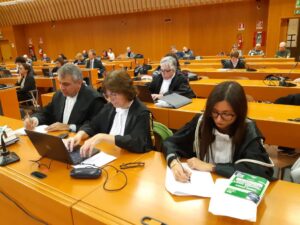
RIEPILOGO
A – Il contesto della tragedia. L’uso diffuso di amianto in diversi settori
B – La «radice» del Processo Eternit Bis (il Maxiprocesso Eternit 1)
C – Elemento soggettivo del reato. La contestazione del dolo eventuale. I giudici che si sono già pronunciati sull’elemento psicologico
D – Le 392 diagnosi di mesotelioma: verifica della certezza attraverso l’immunoistochimica
E – Nesso di causalità oltre ogni ragionevole dubbio
G – Conclusioni. Insensibilità politica. Non un responsabile a ogni costo. «Schmidheiny va assolto»
APPROFONDIMENTO PUNTO PER PUNTO
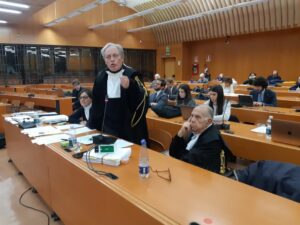
A – IL CONTESTO DELLA TRAGEDIA
«Il contesto della tragedia causata dall’amianto non è solo quello di Casale Monferrato». L’avvocato Alleva, rilevando i dati dal Renam (Registro nazionale dei mesoteliomi), ha riferito che, ad esempio, «la Lombardia è la regione con il maggior numero di mesoteliomi (e ha citato il caso di Broni, dove c’era uno stabilimento della Fibronit chiuso nel 1993, ndr) e, in percentuale, l’incidenza della patologia in Liguria è superiore rispetto al Piemonte». Questo perché, ha argomentato il legale, l’amianto veniva utilizzato non soltanto nelle fabbriche che producevano manufatti, ma anche nelle Ferrovie e nei cantieri navali, dove si usava a spruzzo per coibentare le pareti delle carrozze dei treni fino alle fine degli anni Ottanta e delle navi. E si è utilizzato, l’amianto, per diversi scopi, in tutto il mondo, ha insistito Alleva. «In Italia, in particolare, fino a quando è stato vietato con la legge del 1992. Nel frattempo, la gente ha continuato a inalare fibre di asbesto e continuerà purtroppo ancora per anni a sviluppare il mesotelioma».
B – LA «RADICE» DEL PROCESSO ETERNIT BIS
Il difensore si è addentrato nel cuore dell’arringa dopo aver precisato che la radice del processo Eternit Bis (che, per i morti casalesi, si concluso in primo grado con la condanna, da parte della Corte d’Assise di Novara, a 12 anni di reclusione per omicidio colposo di 147 casalesi, la prescrizione per 199 casi e l’assoluzione per 46) è nel maxiprocesso Eternit 1 dove la contestazione era quella di disastro ambientale doloso, sostenuta dal team della procura composto all’epoca da Raffaele Guariniello, Sara Panelli e Gianfranco Colace: «da quella impostazione è derivato tutto il resto; nell’Eternit Bis (dove, invece, il reato contestato è l’omicidio doloso per le singole morti, ndr) si sono riversati gli atti di quel procedimento».
C – ELEMENTO SOGGETTIVO DEL REATO
A parere del difensore, «stiamo parlando della stessa condotta attribuita all’imputato che, anche nell’Eternit Bis, è già stata oggetto di valutazione da parte di più giudici». Ha ricordato l’udienza preliminare del gup di Torino, Federica Bompieri, la cui decisione aveva dato luogo al cosiddetto «spacchettamento» del fascicolo originario, nel quale i pm chiedevano l’incriminazione di Schmidheiny per omicidio doloso. Ha riassunto il difensore: «La gup Bompieri riqualificò il reato da doloso a colposo; e la Cassazione, avanti alla quale aveva impugnato la procura, reputò corretta la valutazione di Bompieri; e così il tribunale di Torino che ha giudicato e condannato per omicidio colposo nel filone di Cavagnolo; anche la Corte d’Assise di Napoli nel filone per i morti di Bagnoli ha riqualificato il reato da doloso a colposo, e altrettanto la Corte d’Assise di Novara nel primo grado del filone per i morti di Casale», mentre «il pm di Reggio Emilia, per la tranche dei morti di Rubiera, ha chiesto l’archiviazione, poi disposta dal gip».
Invece, a Torino, nel giudizio di secondo grado avanti alla Corte d’Assise d’Appello, «siamo ancora qui a difenderci da una richiesta di condanna all’ergastolo per omicidio doloso».
Poi ha argomentato i motivi che lo portano a dichiarare che «non ci fu dolo». (Anzi, va oltre: «Non solo non fu dolo, ma non c’è neppure una responsabilità colposa» ha affermato).
Soprattutto a beneficio dei giudici popolari, il legale è partito da un interrogativo: «E’ credibile che il signor Schmidheiny abbia voluto un evento di queste proporzioni?». Ossia che «si sia rappresentato l’evento (le centinaia di morti, ndr) come conseguenza della propria condotta e abbia deciso comunque di agire, cioè di procedere con le proprie azioni, pur sapendo di uccidere centinaia di persone?». In altre parole: nel comportamento di Stephan Schmidheiny si configura il reato di omicidio volontario con dolo eventuale?
A giudizio di Alleva no. Secondo lui, «questo ragazzo di 28 anni, che nel 1976 ha assunto la gestione dell’Eternit, non si era avveduto che non era possibile produrre usando l’amianto senza causare quegli effetti (le morti, ndr). E’ vero, ha sbagliato, ma con la convinzione che non si sarebbe arrivati a una tragedia di queste proporzioni! Un errore, sì, ora lo sappiamo, ma frutto di una sottovalutazione come peraltro è avvenuto in tutto il mondo, in base alle conoscenze dell’epoca!» afferma con convinzione Alleva.
E, però, c’erano già, fin dagli anni Cinquanta, studi scientifici da cui emergeva la nocività cancerogena dell’amianto, «ma – ha replicato il difensore – lo stesso Selikoff, che nel 1964 aveva lanciato l’allarme sull’uso della fibra, nel decennio successivo non era orientato a indicare l’abolizione dell’amianto». C’erano i controlli e le numerose prescrizioni impartite dall’Ispettorato del Lavoro circa le condizioni insalubri nello stabilimento di Casale, «ma neppure l’Ispettorato prese in considerazione l’eventualità di sospendere la produzione» ha insistito il legale. In più, «l’Istituto Superiore di Sanità ha cominciato a preoccuparsi dell’amianto come rischio per la salute solo nel 1980». Ha ammesso l’avvocato: «Il corretto modello di comportamento gestionale sarebbe stato eliminare l’amianto: ma lo diciamo ora, con il sapere di oggi!».
Si insiste su questa tesi: all’Eternit, la strategia industriale fu decisa in base alle cognizioni dell’epoca. E anche il Convegno di Neuss viene descritto dalla difesa attraverso questa lente, ribaltando la tesi dell’accusa. La consapevolezza della nocività mortale dell’amianto e le azioni di minimizzazione e nascondimento per non allarmare i lavoratori e la popolazione costituiscono, per la procura, un evidente elemento di prova del dolo. Invece, per il difensore è il contrario: «La consapevolezza, circoscritta alle conoscenze dell’epoca, ha indotto l’imputato ad adoperarsi per limitare i rischi e, per questo, ha fatto investimenti in sicurezza». Argomento piuttosto controverso nel contraddittorio del processo, ma Alleva insiste: «Sono stati interventi tecnologici migliorativi, ed è stato istituito anche il Sil (un Servizio interno per la sicurezza e l’igiene del lavoro, ndr) per eseguire controlli sulla polverosità che nessun altro faceva». Insomma, Schmidheiny, dice il legale, «adottò quelle misure convinto che un miglioramento delle condizioni di lavoro avrebbe abbassato la curva di mortalità».
Cioè? 392 morti (più i molti altri non elencati in questo processo) sono troppi, ma un po’ di meno si potevano accettare?
Le conoscenze dell’epoca (stiamo parlando del 1976) indicavano già chiaramente l’amianto come cancerogeno, causa di tumori ai polmoni e di mesoteliomi, sia tra i lavoratori sia tra i residenti nei dintorni dei siti produttivi. Se Schmidheiny era consapevole che l’amianto fa morire (ed è un fatto assodato che lo sapesse bene già a Neuss, l’aveva detto lui stesso ai suoi dirigenti fino a choccarli) la decisione avrebbe dovuto essere: «Non voglio farne morire nessuno» e non invece «Cerco di farne morire un po’ di meno!».
E’ vero che si parla sempre di tragedia di immani proporzioni perché ha causato migliaia di morti e continua a causarne, ma, tra le migliaia di vittime, ogni malato e ogni morto è in sé una tragedia immane. Per quella vittima è stata una tragedia angosciosa dal momento della diagnosi, per le persone a cui era caro è una tragedia per sempre.
Il difensore ha, tuttavia, concluso questo capitolo affermando che ascrivere all’imputato il dolo «è contrario alla logica».
D – LE 392 DIAGNOSI DI MESOTELIOMA
Poiché nel capo d’accusa «il decesso (cioè l’evento morte, ndr) è attribuito al mesotelioma – ha spiegato Alleva addentrandosi nel secondo capitolo della arringa – dobbiamo affrontare il problema delle diagnosi. Non per fare un processo ai medici che hanno svolto al meglio la loro professione con le conoscenze dell’epoca. Ma dobbiamo essere certi, oggi, che ciò che ha provocato le morti sia stato il mesotelioma», tenuto conto che «è una maledettissima malattia “camaleontica”, con una elevata capacità mimetica, ossia ha l’attitudine a essere confondibile con altri tumori».
Per avere la certezza diagnostica assoluta, il legale afferma che «bisogna usare i criteri scientifici di cui adesso noi disponiamo». Cioè, l’immunoistochimica, «tecnica irrinunciabile» ha detto l’avvocato Alleva. Riconosce che le diagnosi furono e vengono fatte con il concorso collegiale di più specialisti, attraverso approfondimenti diversi, valutazioni e confronti e che tutti concorrono ad addivenire alla massima fondatezza della diagnosi, ma, a suo parere, «oggi è l’anatomopatologo, più di tutti gli altri specialisti, il “signore della certezza della diagnosi”», cioè colui che esegue gli accertamenti con i marcatori più attuali dell’immunoistochimica.
In pratica, le diagnosi fatte a suo tempo dai medici (che, come ha insistito la pm Mariagiovanna Compare, puntavano alla certezza diagnostica non perché pensavano di dover affrontare un processo, ma perché dovevano curare delle persone!), se non passano il vaglio dell’immunoistochimica (con i marcatori più attuali) a parere dei difensori non possono essere considerate certe.
E – NESSO DI CAUSALITA’
«Sul nesso di causa, cioè sulla relazione tra la condotta dell’imputato e l’evento morte, va raggiunta la prova oltre ogni ragionevole dubbio». E’ la premessa rigorosa del difensore su un tema molto delicato e complesso. Che cosa significa? «Deve essere dimostrato con certezza processuale che gli eventi (cioè i decessi) sono la conseguenza delle azioni di Schmidheiny, al punto che – ha esemplificato in modo efficace -, se immaginassimo come non avvenute quelle azioni (cioè se immaginassimo che l’imputato non le ha compiute) dovremmo dire con crisma di certezza che anche le morti non si sarebbero verificate».
Nesso causale che, a fronte di un’unica condotta contestata all’imputato, va provato singolarmente, per ognuno dei 392 decessi, ha rimarcato il legale. Impegno che la Corte d’Assise di Novara, nella sentenza di oltre mille pagine, ha peraltro affrontato e dettagliato, esaminando appunto caso per caso, senza evidentemente convincere la difesa.
«Primo punto fermo: il mesotelioma è legato all’esposizione all’amianto». Ovunque: a Casale, in Italia, nel mondo; è un dato scientifico acquisito e condiviso. Secondo: «Diamo per pacifico, oggi, che non esiste una dose-soglia al di sotto della quale siamo sicuri di non ammalarci di mesotelioma».
Altro aspetto importante: «L’amianto è un minerale biopersistente: una volta che la fibra si è introdotta nell’organismo – ha spiegato il difensore –, al di là della percentuale minima che viene espulsa con la “clearance”, lì si ferma, esponendo il nostro organismo al rischio di sviluppare la prima cellula tumorale».
Su questo aspetto, i consulenti della procura avevano invece affermato che la «clearance» è sufficiente a far diminuire il rischio di mesotelioma se si interrompe l’esposizione all’amianto.
Tra il momento dell’esposizione e la diagnosi può intercorrere un tempo lunghissimo che si chiama latenza convenzionale, con una durata mediana di 48 anni.
Ci sono teorie diverse per spiegare la cancerogenesi del mesotelioma (i consulenti del pm sostengono la «teoria multistadio», i consulenti della difesa propendono per la «cromotripsi», cioè un evento catastrofale), ma il legale afferma che non si è ancora raggiunta una univoca spiegazione scientifica. In ogni caso, ha affermato, «dal momento in cui si sviluppa la cellula tumorale numero 1, inizia la storia del tumore»; a questo punto, «il tumore è irrimediabilmente formato e senza ritorno», anche se non è ancora visibile e diagnosticabile. Quando finisce questo periodo, detto «induzione», «tutte le esposizioni successive sono irrilevanti» è convinzione della difesa, opposta a quella della procura i cui consulenti avevano invece insistito sull’aumento di rischio a fronte di un aumento di esposizione, anche perché non è detto, secondo i ct dei pm, che la cellula tumorale numero 1 riesca a far crescere il tumore, dal momento che l’organismo dispone di difese che possono riconoscerla ed eliminarla. Però, se, vai e vai, alla prima ne seguono una seconda, una terza, una quarta e così via, forse una, alla fine, ce la fa per davvero a dar vita al tumore.
L’avvocato Alleva ha invece rimarcato la necessità inderogabile di stabilire il momento preciso in cui termina l’induzione: «E’ essenziale stabilire dove si colloca questo momento (per capire se rientra nel periodo di garanzia dell’imputato, 1976-1986; ndr)»; in altre parole, per sapere di quali singoli casi di morte Schmidheiny è chiamato a rispondere, la difesa reputa indispensabile accertare quando si è conclusa la fase di induzione, cioè quando si è completata la formazione del tumore, benché non ancora visibile.
A parere dell’avvocato Alleva «l’incognita sul periodo di induzione non è risolvibile, è un ostacolo insormontabile: non è possibile stabilirlo per ognuno dei casi».
Respinge il supporto che arriva dalla scienza epidemiologica, che invece ha convinto i giudici della Corte d’Assise di Novara. La difesa insiste: «La scienza epidemiologica è fondamentale per misurare l’aumento di rischio in una popolazione, ma non è sufficientemente idonea a risolvere il problema della causalità individuale», non è sufficiente, cioè, per Alleva, a spiegare se quello specifico decesso per mesotelioma è riconducibile alla condotta tenuta dall’imputato nel decennio 1976-1986. «L’epidemiologia non ci basta, in un processo, per spiegare i singoli fatti individuali» ha insisto Alleva.
Di avviso contrario la procura (e anche la Corte d’Assise di Novara in sentenza di primo grado) che ha sostenuto la validità dell’epidemiologia e la sua applicazione a questo procedimento penale ricordando che lo stesso metodo è il fondamento, ad esempio, della ricerca farmacologica: lo studio dei gruppi fornisce le indicazioni per mettere a punto il farmaco idoneo al singolo individuo.
F – CONCLUSIONI
«Non è possibile risolvere il problema della causalità individuale dal punto di vista penalistico: dobbiamo alzare le braccia – ha concluso l’avvocato Alleva -. E’ molto faticoso dover ammettere che il nostro è un sistema in cui non siamo in grado di arrivare a una determinazione sicura. E’ uno scenario terrificante soprattutto quando ci sono lacerazioni umane e sociali così importanti, ma non è il processo penale lo strumento per cicatrizzarle e non bisogna cadere nel tranello di attribuire una responsabilità a ogni costo».
Caso mai, ha azzardato il difensore, le responsabilità vanno cercate in una «insensibilità politica», con riferimento, ad esempio, a una legge tardiva che ha vietato l’amianto in Italia solo nel 1992 (per inciso, va ricordato il fondamentale contributo e la tenace battaglia dei casalesi per raggiungere questo risultato). L’avvocato Alleva ha evidenziato che c’erano altri Paesi più sensibili al problema amianto, in modo particolare sull’impiego della crocidolite (il temibilissimo «amianto blu»).
Ma, allora, vien da pensare questo: tenuto conto che Stephan Schmidheiny, come ha insistito la difesa, era a capo di un gruppo industriale internazionale con sessanta stabilimenti nel mondo in questo settore, ben doveva sapere quali Stati erano più rigorosi nell’impiego dell’amianto; perché questo sapere a lui noto non l’ha applicato prontamente ed efficacemente anche in Italia? Perché, con scrupoloso senso di responsabilità, non si è attenuto alle regole straniere più restrittive?
Il difensore, al termine delle ampie argomentazioni, ribadisce: «Il nesso di causalità va comprovato, a livello individuale, cioè per ogni singolo decesso, oltre ogni ragionevole dubbio».
E sulla base di questo dubbio, a giudizio della difesa non superabile, Alleva ha espresso alla Corte d’Assise d’Appello le conclusioni: «Vi chiedo di applicare la legge». Una perifrasi per dire: «Assolvete Stephan Schmidheiny».
La conclusione della procura è opposta: «L’imputato va condannato alla pena massima».
TRANSLATION BY VICTORIA FRANZINETTI
HEARING 11 DECEMBER 2024
Mr Schmidheiny, your defence lawyer said that to heal the damage produced by this apocalyptic tragedy we must seek it outside the criminal trial. And he also said that it is clear that mesothelioma is caused by asbestos. Wherever it was worked and whoever used it. Then he expressed a formidable and fully shared wish: ‘I hope with all my heart that one day we will find a cure for this damn disease.’ Don’t you think, Mr Schmidheiny, that the time has come to commit yourself by personally funding and coordinating scientific research to produce the cure that will cure all the mesothelioma patients of the world? Do it, Mr Schmidheiny, do it now! It will be your greatest and most desirable philanthropic endeavour.
REPORTAGE HEARING 11 DECEMBER 2024
Asbestos was a tragedy‘, but the case at the centre of the Eternit Bis trial, which is now in its second stage at the Court of Appeal in Turin, “is not unique ”, began lawyer Guido Carlo Alleva, defending the defendant Stephan Schmidheiny. It is a tragedy of apocalyptic proportions, of which Casale Monferrato is a part’.
At the hearing on Wednesday, 11 December, the defence arguments were completed; on the 4th, lawyer Astolfo Di Amato had spoken.
The Court, chaired by Cristina Domaneschi, adjourned the trial to Wednesday 8 January, at 11 a.m., for the replies of the prosecution (Prosecutor Drs Sara Panelli, Gianfranco Colace and Mariagiovanna Compare) and the civil parties. The defence lawyers are entitled to their last replies in the hearing on Monday 17 February at 9 a.m. Then the judges, and jury , should meet in chambers to decide the verdict (perhaps on the same day?) against the Swiss entrepreneur called to answer for the wilful murder (with possible malice) of 392 Casale people who died due to asbestos that was used at Eternit in the production of manufactured products (roofs and pipes).
The Prosecutors
SUMMARY
A – The context of the tragedy. The widespread use of asbestos in various sectors
B – The ‘root’ of the Eternit Bis trial (the Eternit 1 Maxi-trial)
C – Subjective element of the crime and possible intent. The judges who have already ruled on the psychological element
D – The 392 diagnoses of mesothelioma: certainty through immunohistochemistry
E – Cause-effect beyond reasonable doubt
F– Conclusions. Political insensitivity. Not a responsible party at any cost. ‘Schmidheiny must be acquitted’
POINT-BY-POINT
The defence: lawyer Guido Carlo Alleva during the harangue on Wednesday 11 December, and lawyer Astolfo Di Amato (who had spoken on 4 December)
A – THE CONTEXT OF THE TRAGEDY
‘The context of the tragedy caused by asbestos is not only that of Casale Monferrato’. Lawyer Alleva, noting data from Renam (National Mesothelioma Registry), reported that, for example, ‘Lombardy is the region with the highest number of mesotheliomas (citing the case of Broni, where there was a Fibronit plant closed in 1993) and, in percentage terms, the incidence of the disease in Liguria is higher than in Piedmont’. This is because, the lawyer argued, asbestos was used not only in factories that produced manufactured goods, but also in the railways and shipyards, where it was used as a spray to insulate the walls of train carriages until the late 1980s and ships. And it was used, asbestos, for different purposes all over the world, Alleva insisted. ‘In Italy, in particular, it was banned by law in 1992. In the meantime, people have continued to inhale asbestos fibres and will unfortunately continue to develop mesothelioma for years to come‘.
B – THE ‘ROOT’ OF THE ETERNIT BIS TRIAL
The defence lawyer went into the heart of the argument after pointing out that the root of the Eternit Bis trial (which, for the Casalese deaths, ended verdict by the Novara Assize Court, of 12 years imprisonment for manslaughter of 147 Casalese, the statute of limitations for 199 cases and the acquittal for 46) is in the Eternit 1 maxi-trial where the charge was that of wilful environmental disaster, […]
C – SUBJECTIVE ELEMENT OF THE CRIME
In the defence lawyer’s opinion, ‘we are talking about the same conduct attributed to the defendant which, also in the Eternit Bis case, has already been considered by several judges’. He recalled the preliminary hearing of Dr Federica Bompieri the Turin Judge of the preliminary hearing (aka GUP), whose decision had led to dividing the trial into four jurisdictions where the Prosecution had charged Schmidheiny with wilful murder. The defence lawyer summed up: ‘Dr Bompieri downgraded the crime from intentional to manslaughter; and the Court of Cassation […] considered Bompieri’s assessment to be correct; and so did the Turin Court, which tried and convicted Schmidheiny for manslaughter the Cavagnolo case [please note the Turin Court of Appeal confirmed the sentence on the `18th of December]; also the Court of Assizes of Naples in the Bagnoli death [row ?] has requalified the crime from murder to manslaughter, and likewise the Court of Assizes of Novara in the first degree of the Casale’, while “the public prosecutor of Reggio Emilia, for the Rubiera death tranche, asked for the case to be dismissed”.
Instead, in Turin, in the verdict before the Court of Appeal, ‘we are still here defending ourselves against a request for a life sentence for wilful murder. He then argued the reasons that lead him to declare that ‘there was no malice’. (Indeed, he went further: ‘Not only was there no malice, but there is no culpable responsibility either,’ he said).
Especially for the benefit of the popular judges, the lawyer started with a question: ‘Is it credible that Mr Schmidheiny wanted an event of these proportions?’ That is to say, that ‘he represented the event (the hundreds of deaths, ed.) as a consequence of his own conduct and still decided to act, i.e. to proceed with his actions, despite knowing that he was killing hundreds of people?’ In other words: does Stephan Schmidheiny’s behaviour constitute the crime of voluntary manslaughter with possible intent? In Lawyer Alleva’s opinion, no. According to him, ‘this 28-year-old kid, who took over the management of Eternit in 1976, did not realise that it was not possible to produce using asbestos without causing those effects (the deaths, ed.). True, he made a mistake, but with the expectation that a tragedy of these proportions would not have occurred! A mistake, yes, we now know, but the result of an underestimation, as was the case all over the world, based on the knowledge of the time!‘ Alleva firmly stated.
And, however, as far back as the 1950s, there had been scientific studies showing the carcinogenic harmfulness of asbestos, ‘but,’ addeded the defence, ‘Selikoff, who in 1964 had sounded the alarm on the use of the fibre, was not inclined to indicate the abolition of asbestos in the following decade. There were the controls and the numerous prescriptions issued by the Labour Inspectorate regarding the unhealthy conditions in the Casale plant, ‘but not even the Inspectorate took into consideration the possibility of suspending production,’ insisted the lawyer. In addition, ‘the Istituto Superiore di Sanità only began to be concerned about asbestos as a health risk in 1980’. The lawyer admitted: ‘The correct management behaviour model would have been to eliminate asbestos: but we are saying this now, with today’s knowledge!
The defence repeats it: at Eternit, the industrial strategy was decided according to the knowledge of the time. And the Neuss conference is also described by the defence through this lens, overturning the prosecution’s thesis. The awareness of the deadly harmfulness of asbestos and the actions of minimisation and concealment so as not to alarm the workers and the population constitute, for the prosecution, a clear element of proof of malice. However, for the defence, the opposite is true: ‘The awareness, limited to the knowledge of the time, induced the defendant to take steps to limit the risks and, for this, he made investments in safety’. A rather controversial argument in the trial, but Alleva insists: ‘Technological improvements were made, and the Sil (an in-house Occupational Safety and Hygiene Service) was also set up to carry out dust checks that no one else did’. In short, Schmidheiny, says the lawyer, ‘adopted those measures convinced that an improvement in working conditions would lower the mortality curve’.
So what? 392 deaths (plus the many others not listed in this trial) are too many, but a little less could be accepted? The knowledge at the time (we are talking about 1976) already clearly indicated asbestos as a carcinogen, the cause of lung cancer and mesothelioma, both among workers and members of the community around the production sites. If Schmidheiny was aware that asbestos causes people to die (and it is an established fact that he already knew this in Neuss, he had told his managers to the point of shocking them), his decision should have been: ‘I don’t want anyone to die’ and not ‘I’m trying to make fewer die! We always speak of a tragedy of immense proportions because it has caused thousands of deaths and continues to cause them, but among the thousands of victims, every sick person and every dead person is in itself a huge tragedy. For that victim it was an agonising tragedy from the moment of diagnosis, for those he loved it is a tragedy forever. The defence lawyer, however, concluded this chapter by stating that ascribing wilfulness to the defendant ‘is contrary to logic’.
D – THE MESOTHELIOMA 392 DIAGNOSES
Since in the indictment ‘the death (i.e. the death event, ed.) is attributed to mesothelioma,’ explained Alleva going into the second chapter of the harangue, ‘ we must address the problem of the diagnoses. Not to make a trial of the doctors who performed their profession to the best of their knowledge at the time. But we must be certain, today, that what caused the deaths was mesothelioma‘, bearing in mind that “it is a damned ”chameleon-like’ disease, with a high mimetic capacity, that is, it has the aptitude to be confused with other tumours‘. In order to have absolute diagnostic certainty, the lawyer states that ‘we have to use the scientific criteria that we now have’. That is, immunohistochemistry, ‘an indispensable technique,’ said lawyer Alleva. He acknowledges that diagnoses were and are made with the collegial collaboration of several specialists, through different investigations, evaluations and comparisons, and that they all contribute to arriving at the best possible diagnosis, but, in his opinion, ‘today it is the anatomic pathologist, more than any other specialist, who is the “lord of the certainty of diagnosis”’, i.e. the one who performs the investigations with the most up-to-date immunohistochemistry markers.
In practice, the diagnoses made at the time by the doctors (who, as public prosecutor Mariagiovanna Compare insisted, aimed at diagnostic certainty not because they thought they had to face a trial, but because they had to treat people!), if they do not pass the immunohistochemistry test (with the most up-to-date markers) cannot be considered certain in the defence counsel’s opinion.
E – CAUSE AND EFFECT
‘On the causal link, i.e. on the relationship between the defendant’s conduct and the event of death, proof beyond reasonable doubt must be reached’. This is the defendant’s strict premise on a very delicate and complex issue. What does it mean? ‘It must be demonstrated with procedural certainty that the events (i.e. the deaths) are the consequence of Schmidheiny’s actions, to the point that,’ he effectively exemplified, ’ if we imagined that those actions did not take place (i.e. if we imagined that the defendant did not carry them out) we would have to say with certainty that the deaths would not have taken place either.
A causal link that, in the face of a single conduct alleged against the defendant, must be proved individually, for each of the 392 deaths, the lawyer remarked. A commitment that the Court of Assizes of Novara, in its sentence of over a thousand pages, has also addressed and detailed, examining case by case, without evidently convincing the defence.
‘First firm point: mesothelioma is linked to exposure to asbestos‘. Everywhere: in Casale, in Italy, in the world; it is an acquired and shared scientific fact. Second: ‘We take it for granted, today, that there is no threshold dose below which we are sure of not falling ill with mesothelioma’.
Another important aspect: ‘Asbestos is a bio persistent mineral: once the fibre is introduced into the body,’ the defence lawyer explained, ‘ beyond the minimum percentage that is expelled through “clearance”, it stops there, exposing our organism to the risk of developing the first cancer cell’.
On this aspect, the prosecutor’s consultants had instead stated that ‘clearance’ is sufficient to decrease the risk of mesothelioma if exposure to asbestos is stopped. A very long time can elapse between the moment of exposure and diagnosis, which is called conventional latency, with a median duration of 48 years. There are different theories to explain the carcinogenesis of mesothelioma (the public prosecutor’s consultants support the ‘multistage theory’, the defence consultants lean towards ‘chromothripsis’, i.e. a catastrophic event), but the lawyer states that an unambiguous scientific explanation has not yet been reached. In any case, he said, ‘from the moment tumour cell number 1 develops, the history of the tumour begins’; at this point, ‘the tumour is irrevocably formed and without return’, even if it is not yet visible and diagnosable. When this period, known as ‘induction’, ends, ‘all subsequent exposures are irrelevant’ is the conviction of the defence, as opposed to that of the public prosecutor’s office, whose consultants had instead insisted on the increase in risk in the face of an increase in exposure, also because, according to the public prosecutor’s consultants, it is not certain that tumour cell number 1 will succeed in growing the tumour, since the body has defences that can recognise and eliminate it. However, if the first is followed by a second, a third, a fourth, and so on, perhaps one eventually does indeed succeed in giving birth to the tumour.
Lawyer Alleva, on the other hand, emphasised the need to establish the precise moment when the induction ended: ‘It is essential to establish where this moment lies (to understand whether it falls within the defendant’s period of guarantee, 1976-1986; ed.)’; in other words, to know which individual cases of death Schmidheiny is called to answer for, the defence considers it essential to ascertain when the induction phase ended, i.e. when the tumour formation was completed, although not yet visible. In lawyer Alleva’s opinion, ‘the question of the induction period cannot be resolved, it is an insurmountable obstacle: it is not possible to establish it for every case’. He rejected the support coming from epidemiological science, which instead convinced the judges of the Novara Assize Court. The defence insists: ‘Epidemiological science is fundamental for measuring the increase in risk in a population, but it is not sufficiently suitable for resolving the problem of individual causality’, i.e. it is not sufficient, according to Alleva, to explain whether that specific death from mesothelioma can be traced back to the conduct of the defendant in the decade 1976-1986. ‘Epidemiology is not enough in a trial to explain individual facts,’ insisted Alleva. The prosecutor’s office (and also the Court of Assizes of Novara in its first instance judgement) took a contrary view, upholding the validity of epidemiology and its application to this criminal case, recalling that the same method is the foundation, for example, of pharmacological research: the study of groups provides the indications for developing the appropriate drug for the individual.
F – CONCLUSIONS
‘It is not possible to solve the problem of individual causation from a criminal law point of view: we have to give up,’ concluded Advocate Alleva. ‘It is very exhausting to have to admit that ours is a system in which we are not able to reach certainty. It is a terrifying scenario, especially when there are such important human and social pains, but the criminal trial is not the instrument to heal them and we must not fall into the trap of attributing responsibility at any cost‘. If anything, the defence lawyer ventured, responsibility should be sought in ‘political insensitivity’, referring, for example, to a late law that only banned asbestos in Italy in 1992 (incidentally, the fundamental contribution and tenacious battle of the Casale families to achieve this result should be remembered). Mr Alleva pointed out that there were other countries that were more sensitive to the asbestos problem, particularly on the use of crocidolite (the dreaded ‘blue asbestos’). Considering that Stephan Schmidheiny, as the defence insisted, was the head of an international industrial group with sixty factories in the world in this sector, he must have known which States were more rigorous in the use of asbestos; why did he not apply this knowledge promptly and effectively in Italy too? Why, with a scrupulous sense of responsibility, did he not comply with the most restrictive foreign rules? At the end of his extensive arguments, the defence lawyer insisted: ‘The causal link must be proven, at an individual level, i.e. for each individual death, beyond reasonable doubt.
And on the basis of this doubt, which in the defence’s opinion could not be overcome, Alleva told the Court of Assizes of Appeal the conclusion: ‘I ask you to apply the law’. Like saying: ‘Acquit Stephan Schmidheiny’. The prosecution’s conclusion is the opposite: ‘The defendant should be sentenced to the maximum penalty’.
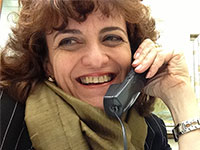
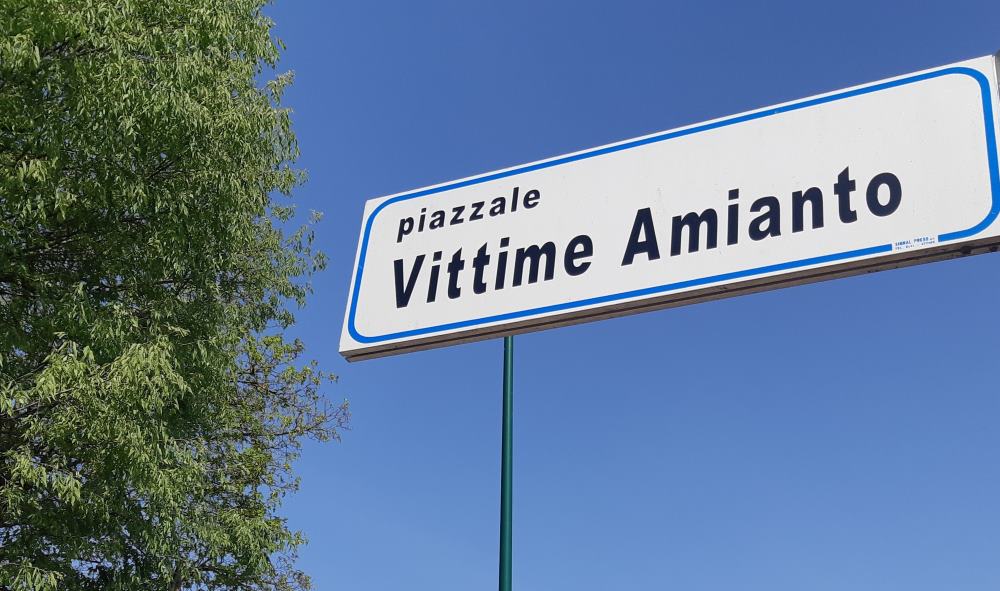
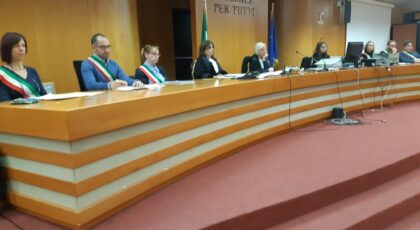
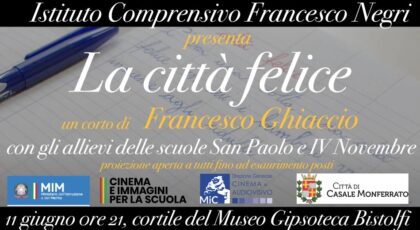
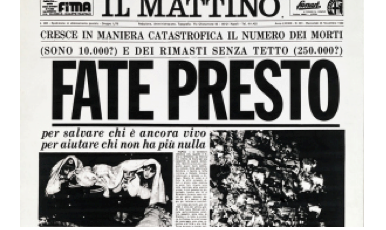
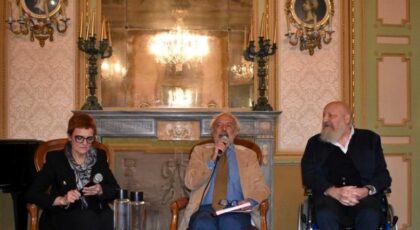
Grazie Silvana per puntuale resoconto . Attendiamo fiduciosi ..
Grazie per la documentata informazione come sempre esaustiva.Complimenti.
Grazie Silvana. Molto interessante come sempre la tua analisi dei fatti. Leggere quanto scrivi consente di comprendere le varie posizioni, della difesa e dell’accusa, come se si fosse presenti al processo.
Leggerti mi accelera la frequenza cardiaca, mi fa provare rabbia, paura, sgomento, ma non mi toglie mai la voglia di fare di più per chi ha subito questa ingiustizia. Comunque vada a finire questo processo e’ necessario che ora più che mai si stia uniti e si trovi la cura per questo tumore che non colpisce solo Casale. E lo si può fare solo investendo sulla bonifica e sulla ricerca, quella vera, di alto livello, mettendo in campo scienziati di tutto il mondo e avendo la possibilità di sperimentare i nuovi farmaci da noi e in tutti i posti dove il mesotelioma colpisce ancora. Io non perdo la speranza e faccio di tutto per conservare la forza